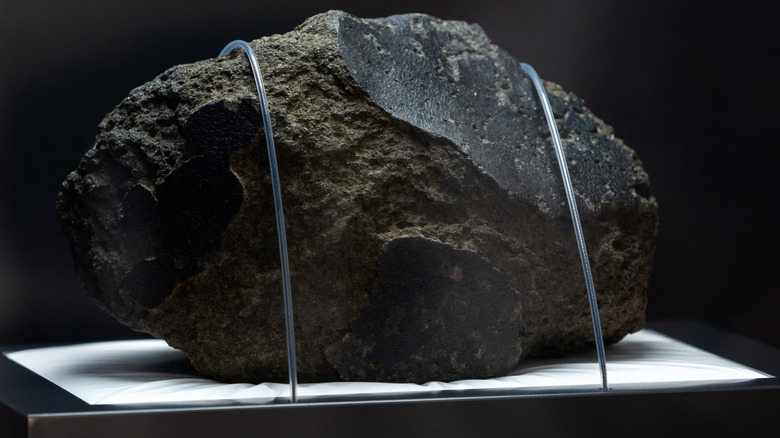How Many Meteors Actually Hit Earth Every Year?
A meteor is a broken fragment of rock from space, such as debris from an asteroid collision, that enters Earth's atmosphere. They are typically visible at night as they make fast-moving streaks through the sky and are popularly referred to as "shooting stars."
The name meteor is changed to meteorite when a meteor actually hits the ground rather than burning up in the atmosphere; meteors and meteorites are the same thing, though, just in different stages of their journeys. Thousands of meteorites – typically made up of iron and nickel, silicate materials, or a mix of both of them — actually do hit Earth every year. Even more hit Earth's atmosphere, but they never make it to the ground; only the strongest are able to survive the trip. That said, cases of meteorites causing injury to people are very rare, but it can still happen.
Interestingly, Earth isn't the only victim of meteorites. An astronomer even captured video of one hitting the moon.
What determines if a meteor makes it to Earth?
Though thousands of meteorites hit Earth annually, the average person has a hard time telling them apart from rocks. They can also be extremely difficult to locate, as they move so fast through the sky. In fact, there is a video of a meteor striking the Earth at 37,000 mph. That is very fast!
The largest meteorites have the best chance of surviving the fall to Earth. They may start out quite big as they enter the atmosphere, but they burn up and lose size along the way; any that actually make it to the ground are considerably smaller than they were before. So, the bigger the meteor, the better its chance at becoming a meteorite.
They also have an improved chance of survival if they take a more direct path to the ground as opposed to streaking through the sky at a long angle. This lessens the amount of time they spend burning.
Should we ever be worried about meteorites?
The first documented case of a person being injured directly by a meteorite in the United States happened in 1954. Ann Hodges had one crash through the roof of her home in Alabama in November of that year. Though it was an 8-pound meteorite, she came out of it with onely major bruising and a crazy story to tell.
A meteor in 2013 that was as big as a house entered the sky over Russia. It blew up 14 miles above the ground. The explosion was strong enough to shatter windows in a 200-square-mile area and cause damage to buildings, resulting in the injury of over 1,600 people.
These, however, are extremely rare cases. Earth's atmosphere does a very good job of protecting us by attempting to burn away all meteors that enter it. Otherwise, we might be fending off space rocks regularly instead of enjoying spectacular meteor showers like the Perseids, one of multiple such shows that can be visible throughout the year.


